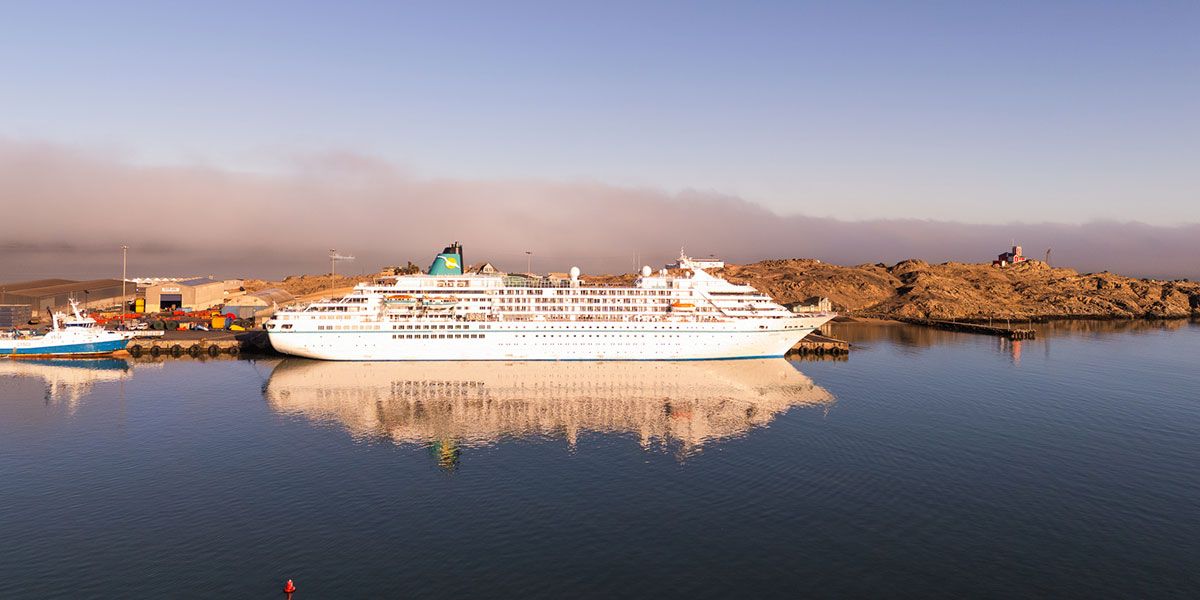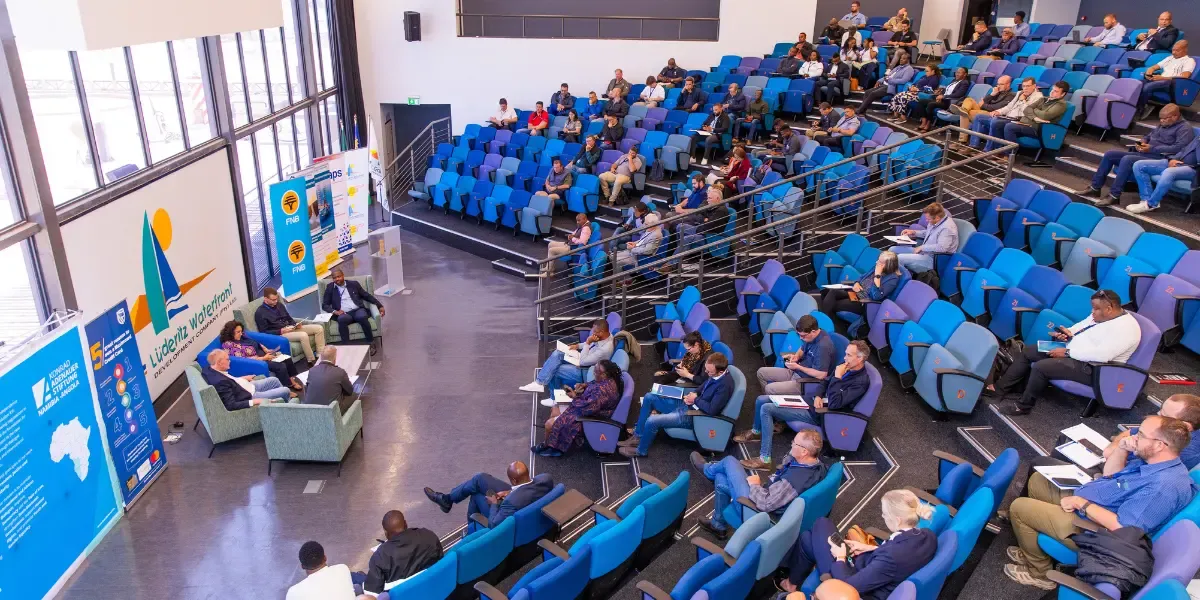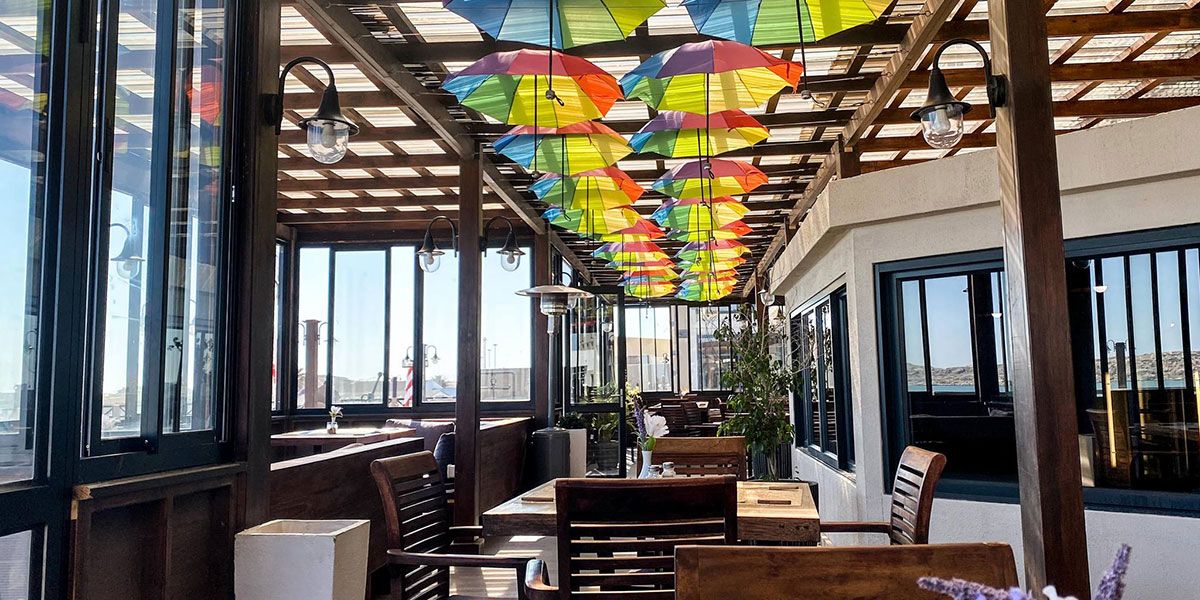
Lüderitz on the threshold of new opportunities
If there is any town in Namibia that has survived tough economic times, Lüderitzbucht presents a classic example. During Namibia’s pre-independence era, the harbour town of Lüderitz suffered many years of economic abandonment. At the end of a long road and in a remote position, Lüderitzbucht is now being rediscovered.
The effects of economic abandonment, which spilled over into the early 1990s, left the town in a poor state of development. At independence, Lüderitz resembled images like those found at nearby Kolmanskop, the ‘ghost town.’ The harbour town was often viewed negatively described as a sleepy, windy town with little economic activity. Its coastal status was even questioned, and many believed that nothing productive was happening in this so-called ‘dying town,’ making it seem pointless to visit such a remote place. Lüderitz was isolated in many ways. Some considered it too far to reach, to which my counter-question has always been: “Far from where and from whom in a unitary state?”
The poor economic conditions of the early 1990s were not merely coincidental; they were the result of a deliberate and well-calculated political agenda of economic sabotage pursued by the apartheid-era South African regime. The transport system to Lüderitz—by rail, port, and road—was in tatters at independence. The intention was to render the harbour town ineffective and eventually collapse its local economy while the apartheid-era South African regime maintained a firm grip on Walvis Bay and the offshore islands.
As a consequence of this “dark era” characterised by uncertainty, the private sector was reluctant to invest in Lüderitz. This situation forced many residents to leave en masse in search of greener pastures elsewhere. The question of whether Lüderitz would one day rise again puzzled me in the early 1990s. To understand the dynamics and unique complexities that kept the town behind, as well as its evolution, one must unravel historical facts from the pre-independence era. In other words, Lüderitz’s development model presents an interesting public discourse for scholars of economic development.
THE RISE OF LÜDERITZ
Lüderitz is now on the move, going through an exciting phase of economic reawakening, driven by several factors. New growth drivers have brought the town into focus, attracting a growing number of prospective investors and entrepreneurs.
Businesspeople continue to flock to Lüderitz in large numbers following the discovery of oil and gas, the potential impact of the envisaged green hydrogen project, and the rapid growth of the logistics sector around the port. Another factor is the cultivation of underwater seaweed forests for export to international markets. All these developments represent a major shift, given that the fishing industry has been the mainstay of the town’s economy for several decades. There are renewed plans to construct a new deep-sea port at Angra Point to support major development projects. These projects will unlock further growth opportunities for Lüderitz and the greater //Kharas Region. Visiting Lüderitz today offers an authentic experience filled with optimism and opportunity.
Over the past 35 years, the town has shifted its focus to capitalising on emerging opportunities. However, with this newfound optimism come extraordinary opportunities and strategic challenges. The town’s population is growing at a rapid pace, triggering high demand for corporate offices, residential properties—including apartments and upmarket hotel accommodations—as well as modern amenities such as a private hospital. Leisure tourists, mainly from Europe, continue to visit Lüderitz’s historical hotspots.
Lüderitz is now at a turning point in its development history. We are witnessing a town whose time has come after a long wait. Encouragingly, the ongoing Lüderitz Waterfront Development continues to play a catalytic role in unlocking socio-economic opportunities. The Namibian government is to be commended for investing heavily in critical waterfront infrastructure, boosting private sector confidence in doing business in a once abandoned town.
The state-owned Lüderitz Waterfront Development Company (LWDC) was established with the goal of contributing meaningfully to the economic revival of Lüderitz, particularly in tourism and facilitating growth. The company’s impact on the town is visible through its various developments and facilities.
The interventions under the auspices of the Lüderitz Waterfront have not only helped reverse the negative perceptions that haunted the harbour town for decades but have also led to a significant transformation. The leadership at LWDC has remained focused on developing forward-thinking solutions for tomorrow’s challenges.
The long-term vision is to develop the Lüderitz Waterfront into exceptional spaces where people can live, work, study and enjoy. With the ongoing expansion of the waterfront development, Lüderitz is becoming increasingly attractive to tourists and has already opened a wide range of new business opportunities. It can be argued that the state-owned LWDC represents progress and success in the region.
THE THREE RENAISSANCES OF DEVELOPMENT
From a developmental perspective, Lüderitz has gone through three phases of renaissance. The first was the vibrant diamond industry, which kept the town flourishing from 1908. The second renaissance was driven by the growth of the fishing sector in post-independence Namibia, creating job opportunities. The third renaissance is now emerging, driven by the energy sector—particularly oil, gas, and green hydrogen.
COLLABORATION IS ESSENTIAL
This new reality presents both extraordinary opportunities and challenges for industry stakeholders. A town undergoing transformation requires its local authority to be well- capacitated, proactive, and responsive to the needs of its growing population, visitors, and investors. Pragmatism will be essential in transforming Lüderitz into the "Dubai of Namibia."
Fluksman Samuehl is a development practitioner with over 25 years of experience. He currently serves as CEO of Lüderitz Waterfront Development Company and Chairman of the Public Enterprises’ CEOs Forum. The opinions expressed herein are solely those of the author in his personal capacity.



